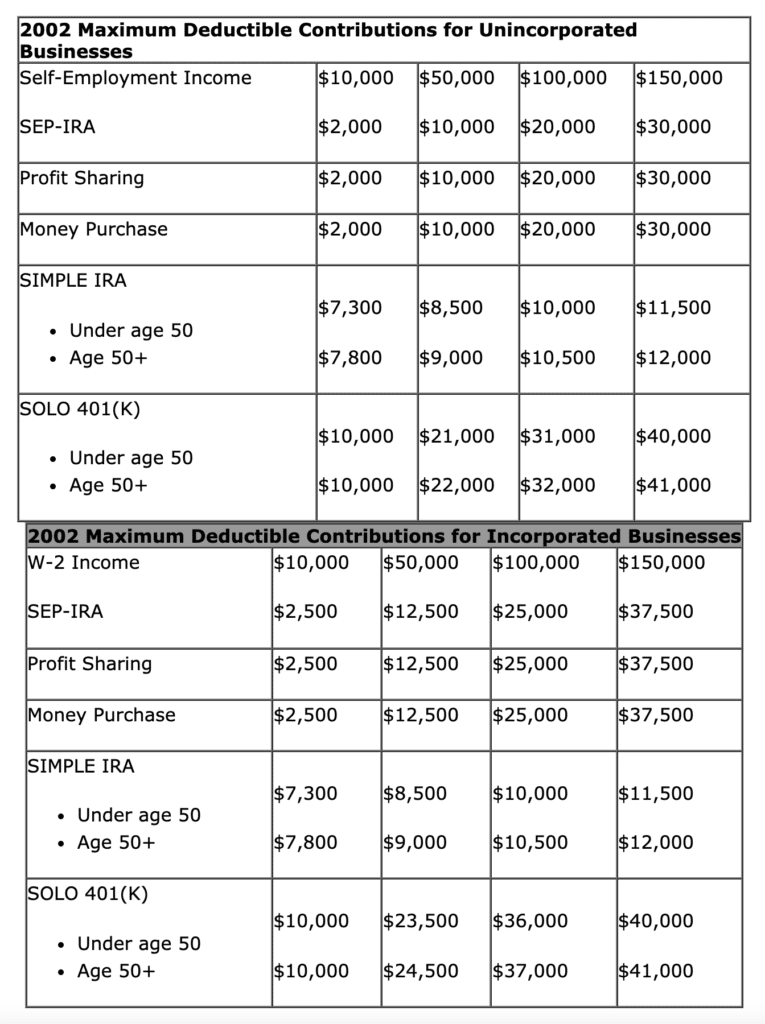1. Introduction
a. Essentially, there are two types of plans: defined contribution plans and defined benefit plans. A plan (whether a defined contribution or a defined benefit plan) will be tax-qualified only if the contributions or the benefits provided under the plan do not discriminate in favor of employees who are highly compensated.
i. Defined contribution plans are typically tested by examining how contributions, forfeitures, trust income and gains or losses are allocated to participants.
ii. Contributions and forfeitures allocated to highly compensated participants as a percentage of their compensation must not be appreciably higher than for non-highly compensated participants.
iii. Trust income, gains and losses, must generally be allocated to participants in proportion to their account balances.
b. A limited exception to discrimination in favor of highly compensated employees is allowed in plans that are “integrated” with social security.
i. The integration level used is the social security “taxable wage base” for each year (the maximum amount of compensation subject to social security taxes) or may, in certain circumstances, be a stated dollar amount which is less.
ii. The assumption is that the company’s plans and the company’s contribution to the social security system should be considered together, or “integrated” in testing for discrimination under the company’s plan.
c. Distributions from qualified retirement plans are subject to spousal protection requirements. Unless spousal consent is obtained, benefits must be paid in an annuity form such that the participant’s spouse is protected. A profit sharing plan may be exempted from this requirement provided that any death benefit under the plan is fully payable to the surviving spouse.
2. Defined Contribution Plan
a. Under a defined contribution plan, company contributions are usually made to a trust and invested as a whole, and separate bookkeeping accounts are maintained to record each participant’s share of the net worth of the trust.
i. At retirement, a participant is entitled only to the amount in his account, or to a pension or annuity that amount will supply.
ii. The amount in a participant’s account in turn depends upon how long he is a participant in the plan, his share of contributions made by the company, and the result of trust investments and forfeited accounts of other participants.
b. The term “defined contribution” may be somewhat misleading in that it implies that specified contributions must be made. Defined contribution plans include profit sharing plans, where contributions may be discretionary, and money purchase pension plans which call for a specified contribution.
c. How each participant’s share of plans assets is determined must be specified in the plan document. This requires the plan to specify:
i. How the company contributions are allocated among plan participants;
ii. How changes in plan assets are to be allocated, such as dividends, interest, realized gains or losses on sales of trust investments, and unrealized gain and losses in the value of trust investment;
iii. The percentage of a participant’s account which he cannot be deprived of even if he resigns or is discharged before retirement and the part which will then be lost or forfeited; and
iv. How forfeited accounts of participants who leave before retirement (“forfeitures”) are allocated among accounts of the remaining participants.
d. Allocations must be made at least once a year. Immediately after the allocation, the total of participants’ accounts will equal the net worth at market value of the trust holding the plan assets.
e. Under the garden variety defined contribution plan, contributions and forfeitures are allocated in proportion to the compensation of participants, and dividends, interest, realized and unrealized gains and losses are allocated in proportion to the account balances of each of the plan participants.
i. A defined contribution plan may also allocate contributions and forfeitures in proportion to units; for example, each participant may be assigned a certain number of units based on compensation, and additional units for years of service.
ii. Use of units in certain instances will be discriminatory and not permissible.
f. Another important governing rule for defined contribution plans is the concept of annual additions. This limits the amounts that may be allocated to a participant’s account in a particular year. There is no limit on dividends, other trust income, or on realized or unrealized gains which may be added to a participant’s account. Other items, which are limited, are given the term “annual additions” and consist principally of company contributions and forfeitures. If a plan requires or allows contribution by employees, these contributions also fall within the term annual additions. Beginning January 1, 2002, total annual additions allocated to a participant in any year under all defined contribution plans of a company may not exceed $40,000.
3. Profit Sharing Plan
a. Profit sharing plans often provide for contributions which are completely discretionary. Where the formula is discretionary, the board of directors must adopt a resolution setting the amount of the contribution. Once the resolution is adopted, the contribution may be made up to the time required for filing the corporation’s income tax return and any extensions of the time to file. The plan could lose its qualification if contributions are not substantial and recurring.
b. Some profit sharing plans require the company to contribute a specified percentage of profits each year. Complex formulas are sometimes used to determine what part of profits are to be contributed to the plan.
4. Money Purchase Pension Plan
a. Use of the term “defined contribution” may be more logical in the case of a money purchase pension plan. Under a money purchase pension plan, a company is required to make contributions specified in the plan document.
b. Although called a “pension plan”, the money purchase pension plan, just as the profit sharing plan, does not promise any specified pension.
i. Bookkeeping accounts are kept to record each participant’s share in the trust holding plan assets.
ii. At retirement, a participant receives whatever pension the balance in his account will purchase.
iii. The amount of the pension cannot be predicted because it depends upon the results of trust investments, the participant’s compensation, and how long the participant is in the plan.
5. Defined Benefit Plan
a. The distinguishing feature of a defined benefit plan is that a specified pension is promised. No separate bookkeeping accounts are maintained for participants, and company contributions are actuarially determined to provide payment of the promised pension.
b. A pension is defined or promised by one of several methods which consider service and compensation in varying degrees in setting the maximum pension payable by the particular plan.
i. A flat benefit plan provides that each participant receives a pension of the same amount. Neither years of service with the company nor compensation level has a bearing.
ii. A fixed benefit plan provides that a participant’s compensation level plays a part in determining the amount of his pension. However, service is not taken into account. For example, a plan provides an annual pension of 30 percent of average compensation.
iii. A unit benefit plan provides a pension which varies directly with both compensation and service. For example, a plan might provide an annual pension of 2 percent of average compensation for each year of service.
c. A defined benefit plan will not be discriminatory if anticipated pensions of highly compensated employees as a percentage of their compensation is approximately the same for the non-highly compensated employees. Because of this, substantial sums may be contributed to a defined benefit plan to fund pensions for older employees, including those who are highly compensated employees.
d. There is a limit on the annual pension payable under a defined benefit plan. A participant’s annual pension payable in the form of a straight life annuity is limited to the lesser of:
i. $90,000 per year (this limit is subject to increases for cost of living adjustments); or
ii. 100 percent of a participant’s average compensation, based on the average of his highest three consecutive years while a participant in the plan.
iii. Both of these limitations above, must be reduced pro rata if a participant has less than 10 years of either participation in the plan or service with the company.
6. Vesting
a. A participant’s accrued benefit must vest over a period of time, based on years of service with the company. The plan must include a vesting schedule which is at least as good as one of the two minimum vesting schedules required by law, i.e., 5 year vesting, or 3 to 7 years graded vesting.
i. Under 5 year vesting, sometimes referred to as “cliff vesting”, a participant must be fully vested once he has 5 years of service. No vesting at all is required prior to that time.
ii. The 3 to 7 year graded vesting schedule requires 20 percent vesting after 3 years of service, increasing by 20 percentage points each year for the next 4 years. A participant with 7 years of service will be 100 percent vested.
b. A company can, of course, be more generous and provide for vesting at a faster rate than prescribed in the minimum schedules above.
c. The plan must provide contingent vesting provisions in the event that it becomes “top heavy”. A plan is top heavy if 60 percent of the accrued benefits under that plan are allocated to the accounts of key employees.
i. A participant must be 100 vested once he reaches the plan’s normal retirement date (even if he has less than the years of service otherwise required for 100 percent vesting).
ii. A participant must also be 100 percent vested in any account pertaining to employee contributions (if any).
7. Integration with Social Security
a. Defined contribution plans are integrated by establishing an integration level or breakpoint, and by providing a higher contribution percentage for compensation above the integration level than for compensation below that level. The differential, or spread, between these rates cannot exceed certain limitations. The integration level cannot exceed the social security taxable wage base in effect at the beginning of the plan year.
b. The spread in both corporate and self-employed defined contribution plans is limited to the employer’s share of the OASDI tax.
c. Under the integration rules, the spread (permitted disparity) cannot, exceed the lesser or (1) the base contribution percentage, or (2) the greater of 5.7 percent or the portion of the OASDI rate that is attributable to old age insurance.
Example. A plan providing for contributions equal to 10 percent of compensation below the integration level will be permitted contributions of 15.7 percent of compensation above that level, whereas a plan providing for a contribution of only 2 percent of compensation below that level will be limited to a 4 percent contribution with respect to compensation above the integration level.
d. The integration level can be lower than the social security taxable wage base if the lower level will not discriminate in favor of highly compensated employees.
e. The defined benefit plan integration rules are extremely complex.
i. An excess defined benefit plan is integrated by establishing an integration level, and by providing a higher benefit percentage for compensation above the integration level than for compensation below that level. In general, the integration differential in an excess plan is limited to .75% for each year of the participant’s years of service with the employer (up to a maximum of 35 years of service).
ii. An offset defined benefit plan is integrated by reducing a participant’s benefit by a portion of the participant’s social security benefits. In general, the maximum offset is .75% of the participant’s final average compensation for each of the participant’s years of service (not to exceed 35 years of service).
8. Factors in Choosing a Plan
a. The following general principles should be considered in deciding between a defined benefit plan and a defined contribution plan.
i. Defined benefit plans require contributions necessary to fund promised pensions, without regard to a company profit. A company should not adopt such a plan unless it can afford to make the necessary contributions. A company subject to extreme fluctuations in profits and cash flow should probably avoid adopting a defined benefit plan.
ii. A defined benefit plan is subject to minimum funding standards in making pension plan contributions. If a plan is terminated and does not have sufficient assets to pay a minimum pension, the company may be liable to the PBGC.
b. If the intent is to obtain the largest possible pension for management and if management is older than most of the other employees, a defined benefit plan should seriously be considered. Similarly, if management is younger, a defined contribution may be more attractive.
c. A profit sharing plan is particularly useful where a company’s profits or cash flow is unpredictable. The greatest flexibility will exist where discretionary contributions may be made.























